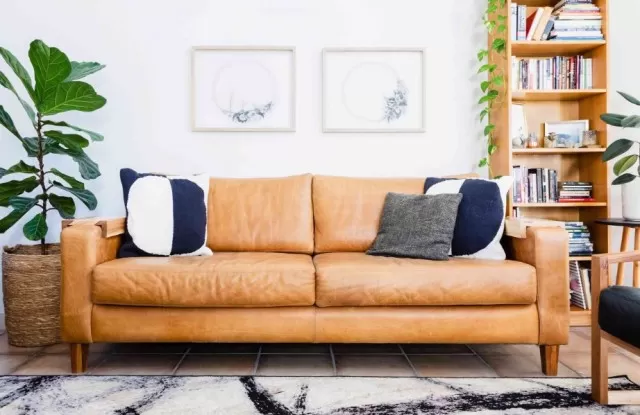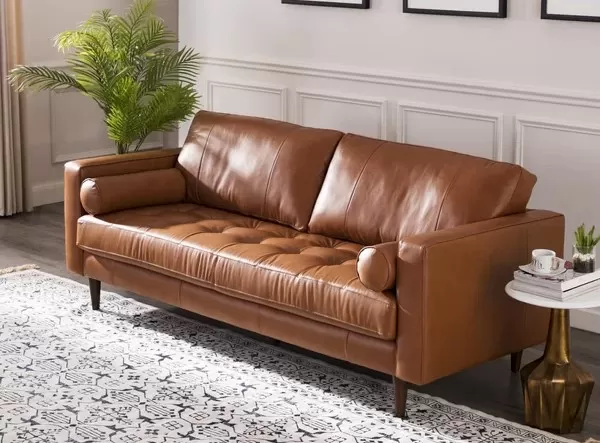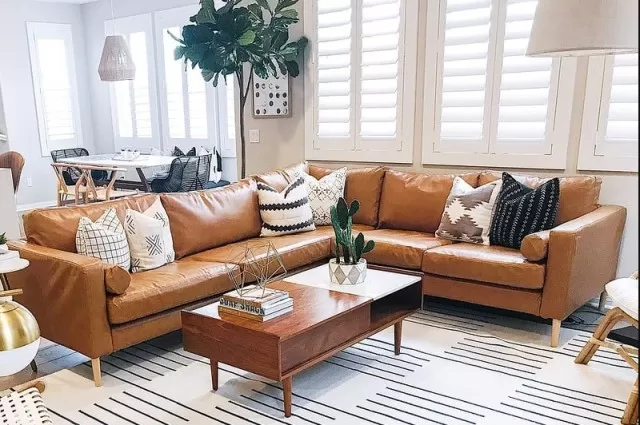Our comprehensive guide will provide you with the necessary information on how to clean and maintain leather furniture.
When it comes to buying new furniture, you may have some last-minute hesitations regarding the best material for you and your home.
With a wide array of upholstery fabric options available, it can be challenging to determine which material will best suit your needs in terms of durability, aesthetics, and ease of cleaning. If you’re considering leather furniture, there are numerous reasons why this material is an excellent choice for upholstered pieces.
However, it’s important to understand that caring for leather requires specific knowledge and techniques that differ from other fabrics.
Our comprehensive guide will provide you with the necessary information on how to clean and maintain leather furniture, enabling you to make your next furniture purchase with confidence.
We will also provide tips on cleaning other leather items, such as jackets and shoes so that you can effectively address any dirt or stains and keep the leather looking fantastic for years to come.
How to Most Effectively Clean Leather Furniture

The advantages of leather furniture make it a popular choice for various applications, including home furnishings, clothing, and footwear.
The inherent qualities of leather contribute to its appeal and desirability. Here are some key characteristics that make leather an excellent option for both your home and wardrobe:
Long-lasting:
Leather furniture is often considered a lifetime investment.
As a natural material, leather develops a beautiful patina over time, enhancing its aesthetic appeal. The durability of leather ensures that it can withstand years of use, making it a sound and valuable purchase compared to fabric options.
Easy care:
Maintaining leather is relatively simple.
Regular cleaning involves using a leather conditioner every 6-12 months and promptly wiping up spills with a clean cloth. It’s important to avoid using regular cleaning supplies such as soaps, detergents, or solvents, as they may damage the leather.
Durability:
Unless subjected to intentional damage, leather furniture is generally as safe as any other piece of furniture in your home.
Opting for protected leather adds an extra layer of defense, as it comes with an additional finish to safeguard against scratches and spills caused by pets or children.
Temperature regulation:
While leather car seats may get hot in the summer and cold in the winter, leather furniture indoors has distinct advantages.
During winter, the leather retains body heat, providing warmth and comfort. In the summer, its natural breathability helps it stay pleasantly cool.
However, it’s advisable to keep leather furniture away from direct sunlight to preserve its color and quality.

To properly care for leather, it’s essential to follow specific guidelines.
When cleaning leather furniture or other leather items, always test any cleaning method in a hidden area to ensure it doesn’t adversely affect the material. For minor spots and spills, immediately wipe up any excess liquid and use a lightly moistened soft cloth with clean lukewarm water if necessary.
Avoid using cleaning solvents, furniture polish, abrasive cleaners, or ammonia water. For grease stains, leaving the spot alone may allow it to dissipate into the leather over time, or you can try using baking soda, cornstarch, or Rubbing Alcohol as alternatives.
In case of persistent stains, it’s advisable to consult a professional leather specialist to avoid potential damage.

When it comes to cleaning specific leather items, such as a leather sofa, jacket, or shoes, tailored approaches may be necessary.
Regular dusting and vacuuming with a microfiber cloth are recommended for leather furniture. Leather jackets can be spot-cleaned using a mixture of warm water and Dish Soap, while leather boots can benefit from the same soap and water solution or the convenience of baby wipes for regular cleaning.
By understanding how to clean and care for leather, you can confidently enjoy the longevity, beauty, and durability that this material provides in your furniture and personal belongings.
*The information is for reference only.